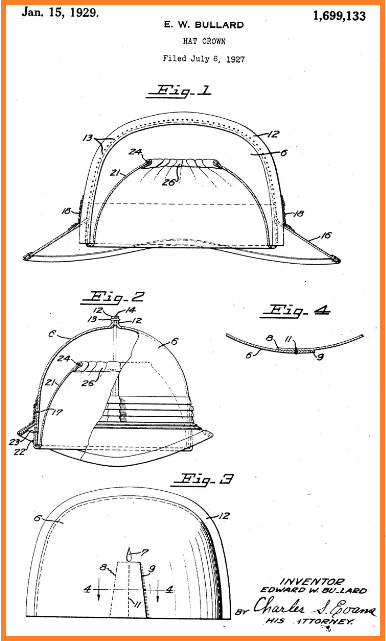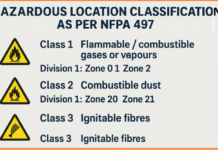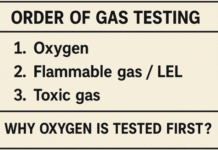In the ever-evolving landscape of construction, safety has become an integral aspect of the industry’s growth. Among the numerous safety measures implemented over the years, the safety helmet stands as a symbol of protection and progress. This article delves into the history of safety helmets in construction, tracing their origins, evolution, and the significant role they play in safeguarding the life of workers.
Contents
Origin of Safety Helmets
The concept of head protection dates back centuries, with various cultures devising rudimentary forms of headgear for safeguarding against falling objects and other hazards. However, the modern safety helmet as we know it today has roots in the early 20th century.
The birth of the safety helmet can be traced to the mining industry. In the aftermath of numerous head injuries and fatalities in coal mines, the need for head protection became evident. The first notable iteration of a safety helmet was introduced in 1919 by the Bullard Company, which crafted a helmet made of steamed canvas, glue, and black paint. This innovation marked a crucial milestone in the history of industrial safety.

Evolution in Design and Materials
As industries expanded and diversified, so did the need for improved safety measures. The 1930s witnessed a shift from canvas to aluminum as the primary material for safety helmets. This change not only enhanced durability but also provided better protection against impact.
Further innovations continued throughout the mid-20th century, with the introduction of fiberglass helmets in the 1940s and the incorporation of suspension systems to absorb and distribute impact forces. The 1960s saw the advent of thermoplastics, revolutionizing helmet design by combining lightweight materials with increased strength and durability.
Regulatory Influences
The evolution of safety helmets in construction has been significantly influenced by regulatory bodies seeking to improve workplace safety. Government agencies and industry organizations began establishing guidelines and standards for the design and use of safety helmets.
In the United States, the Occupational Safety and Health Administration (OSHA) played a pivotal role in setting standards for head protection in construction. OSHA’s regulations emphasized the importance of helmets meeting specific criteria for impact resistance, electrical insulation, and other essential safety features.
Global Impact and Standardization
As construction practices and safety regulations became more globalized, the need for standardized safety measures became apparent. International organizations, such as the International Organization for Standardization (ISO), developed standards for safety helmets to ensure consistency in design and performance.
The ISO 3873 standard, first introduced in 1977, laid out the requirements for industrial safety helmets. This standard has since been revised and updated to keep pace with technological advancements and the evolving needs of various industries.
IS 2925: 1984 Bureau of Indian standards.
Technological Advancements
The latter part of the 20th century and the early 21st century witnessed remarkable technological advancements that further improved the efficacy of safety helmets. The integration of sensors, communication devices, and augmented reality features has elevated safety helmets from mere protective gear to sophisticated tools for enhancing job site safety and efficiency.
Smart helmets equipped with heads-up displays, communication systems, and real-time monitoring capabilities enable construction workers to access crucial information without compromising safety. These innovations represent a fusion of traditional safety principles with cutting-edge technology, ushering in a new era of workplace safety.
Cultural Shift and Acceptance
The acceptance and utilization of safety helmets in construction are not merely the result of regulatory mandates but also a cultural shift towards prioritizing workers safety. Employers, recognizing the moral and economic imperative of ensuring a safe working environment, have increasingly embraced safety protocols, including the use of helmets.
Moreover, the awareness campaigns and educational initiatives by safety advocacy groups and industry associations have played a pivotal role in fostering a culture of safety consciousness within the construction sector. As a result, the safety helmet has become a symbol of responsibility and a non-negotiable aspect of personal protective equipment (PPE) on construction sites worldwide.
Challenges and Future Prospects
Despite the significant strides made in the development of safety helmets, challenges persist. Comfort, ventilation, and adaptability to various job roles are ongoing considerations for manufacturers. Striking a balance between optimal protection and user comfort remains a continuous challenge.
Looking ahead, ongoing research and development efforts are likely to focus on enhancing helmet materials, incorporating more advanced sensor technologies, and exploring innovative designs. The integration of artificial intelligence and machine learning algorithms for predictive safety analysis could further transform safety helmets into proactive risk mitigation tools.
The history of safety helmets in construction is a testament to the industry’s commitment to progress and the safety of its workforce. From humble beginnings in coal mines to the cutting-edge smart helmets of today, these essential pieces of safety equipment have come a long way.
As construction methods and technologies continue to evolve, so too will the design and functionality of safety helmets. The journey from canvas to smart materials symbolizes the industry’s dedication to creating safer and more efficient workplaces. The safety helmet stands not only as a physical shield for workers but also as a metaphorical emblem of a commitment to progress and a safer future in the dynamic world of construction.





